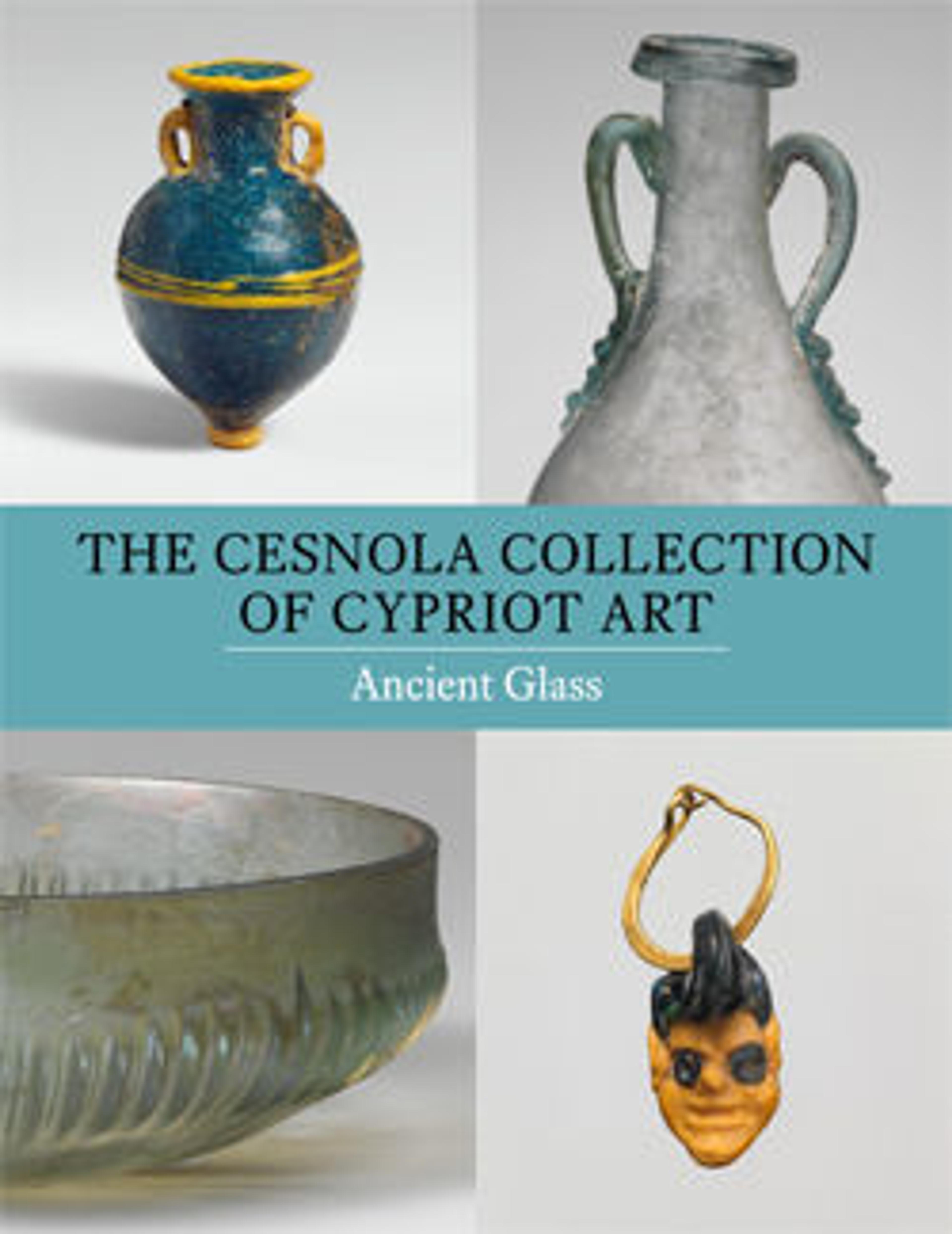Glass oil lamp
Translucent blue green; applied trail in same color.
Projecting oval nozzle with wick hole; circular body with sloping, slightly concave shoulder, separated from the discus by a single groove; plain discus, deeply pressed in at center; raised outer flange below shoulder, then sides curving in to rounded base with deeply pressed-in center; integral projecting oval boss at rear, opposite nozzle, to which a solid, thick trail has been applied to form a handle.
Broken and repaired, with part of discus missing and weathered breaks on nozzle and handle; many bubbles; slight dulling and iridescence, with patches of thick, yellow limy weathering, especially at front of body and on nozzle, and smaller areas of soil encrustation. No filler hole is visible but must have been located towards rear of discus behind the central point where the discus and bottom have been pressed together.
Most Roman oil lamps were made of terracotta or bronze. Glass examples are relatively rare; this one is particularly interesting because it copies the shape of mold-made terracotta lamps fairly closely—even down to the decoration on the nozzle.
Projecting oval nozzle with wick hole; circular body with sloping, slightly concave shoulder, separated from the discus by a single groove; plain discus, deeply pressed in at center; raised outer flange below shoulder, then sides curving in to rounded base with deeply pressed-in center; integral projecting oval boss at rear, opposite nozzle, to which a solid, thick trail has been applied to form a handle.
Broken and repaired, with part of discus missing and weathered breaks on nozzle and handle; many bubbles; slight dulling and iridescence, with patches of thick, yellow limy weathering, especially at front of body and on nozzle, and smaller areas of soil encrustation. No filler hole is visible but must have been located towards rear of discus behind the central point where the discus and bottom have been pressed together.
Most Roman oil lamps were made of terracotta or bronze. Glass examples are relatively rare; this one is particularly interesting because it copies the shape of mold-made terracotta lamps fairly closely—even down to the decoration on the nozzle.
Artwork Details
- Title:Glass oil lamp
- Period:Early Imperial
- Date:ca. 2nd half of 1st century CE
- Culture:Roman
- Medium:Glass; blown in a closed mold
- Dimensions:1 1/2 × 4 3/8 × 3 1/8 in. (3.8 × 11.1 × 8 cm)
- Classification:Glass
- Credit Line:The Cesnola Collection, Purchased by subscription, 1874–76
- Object Number:74.51.286
- Curatorial Department: Greek and Roman Art
More Artwork
Research Resources
The Met provides unparalleled resources for research and welcomes an international community of students and scholars. The Met's Open Access API is where creators and researchers can connect to the The Met collection. Open Access data and public domain images are available for unrestricted commercial and noncommercial use without permission or fee.
To request images under copyright and other restrictions, please use this Image Request form.
Feedback
We continue to research and examine historical and cultural context for objects in The Met collection. If you have comments or questions about this object record, please contact us using the form below. The Museum looks forward to receiving your comments.
